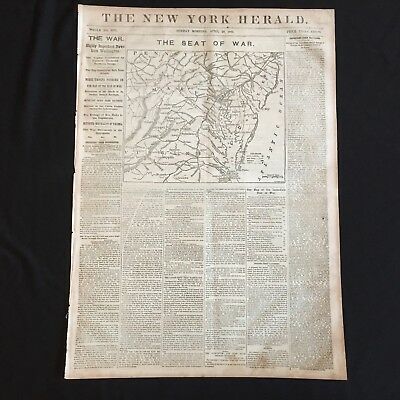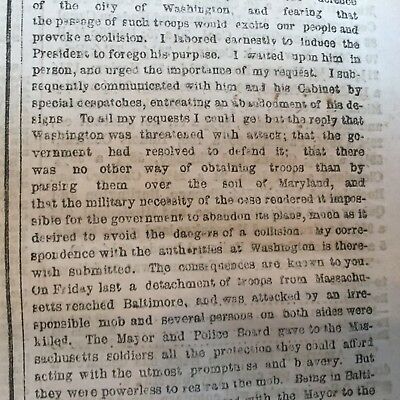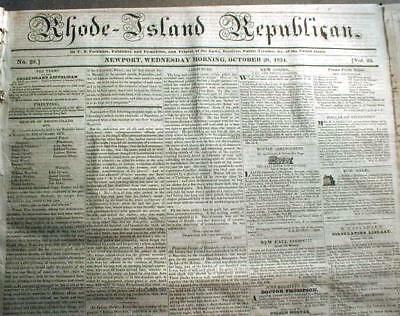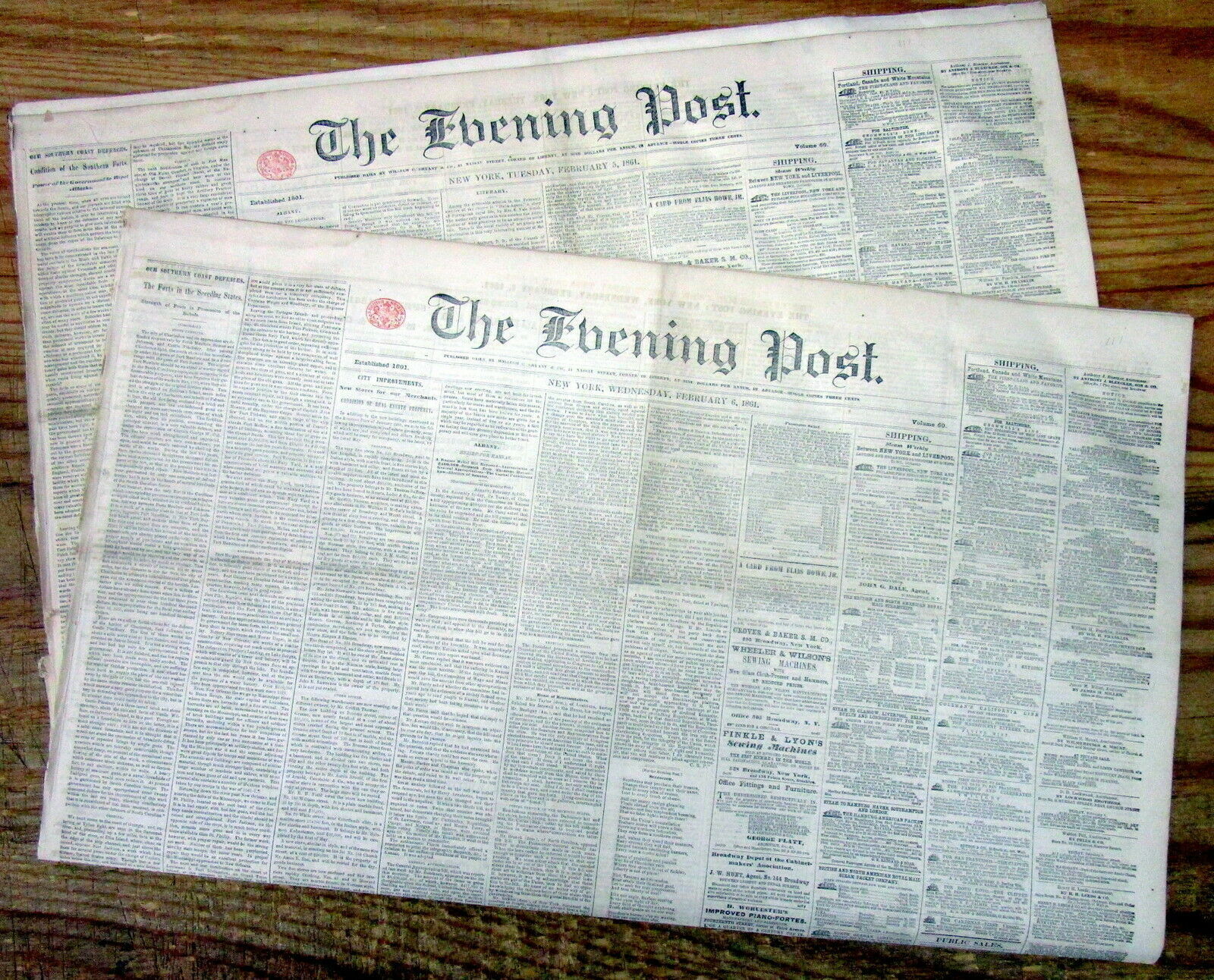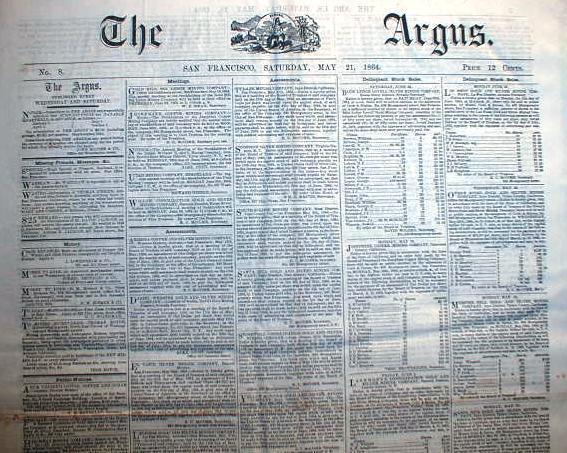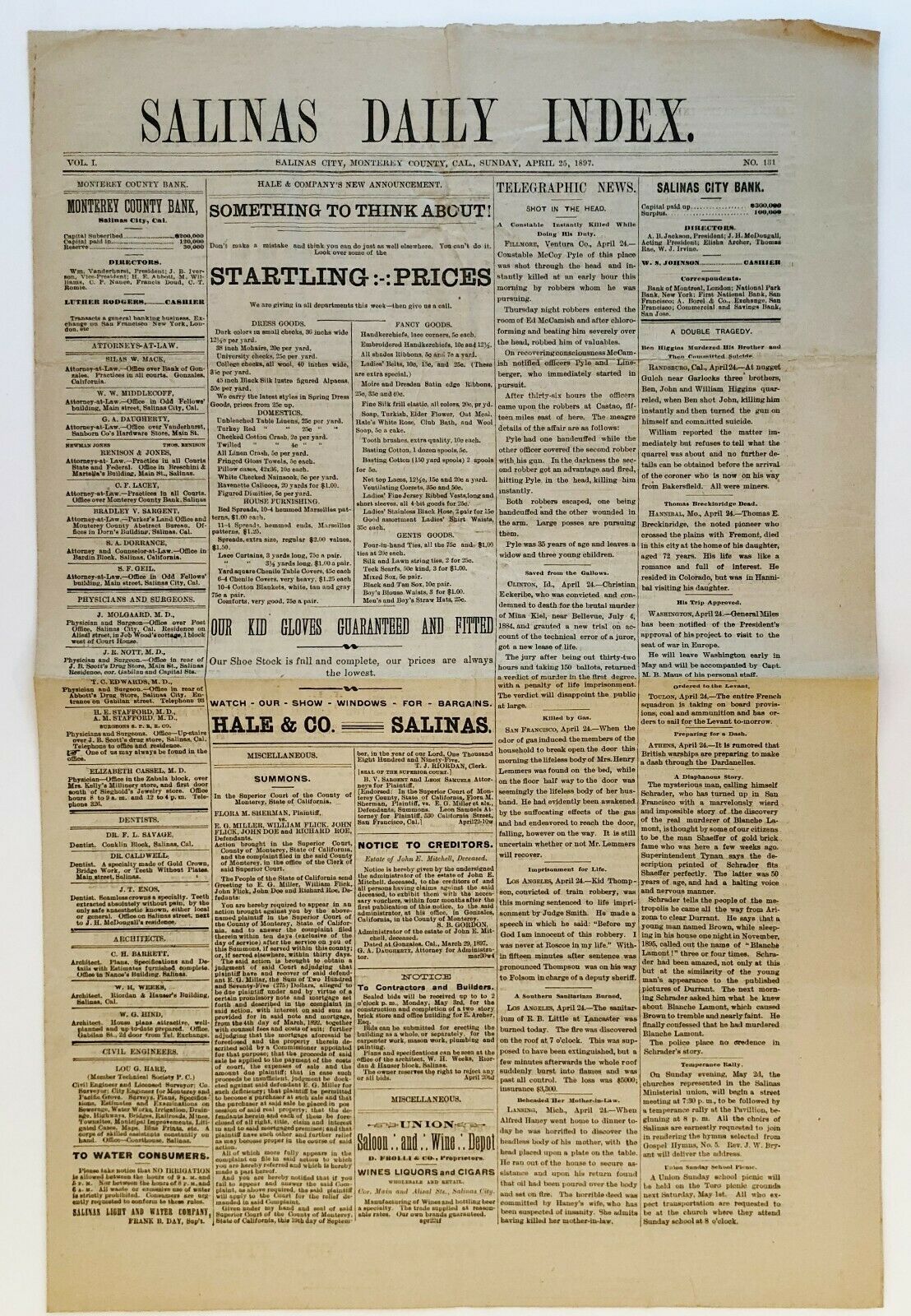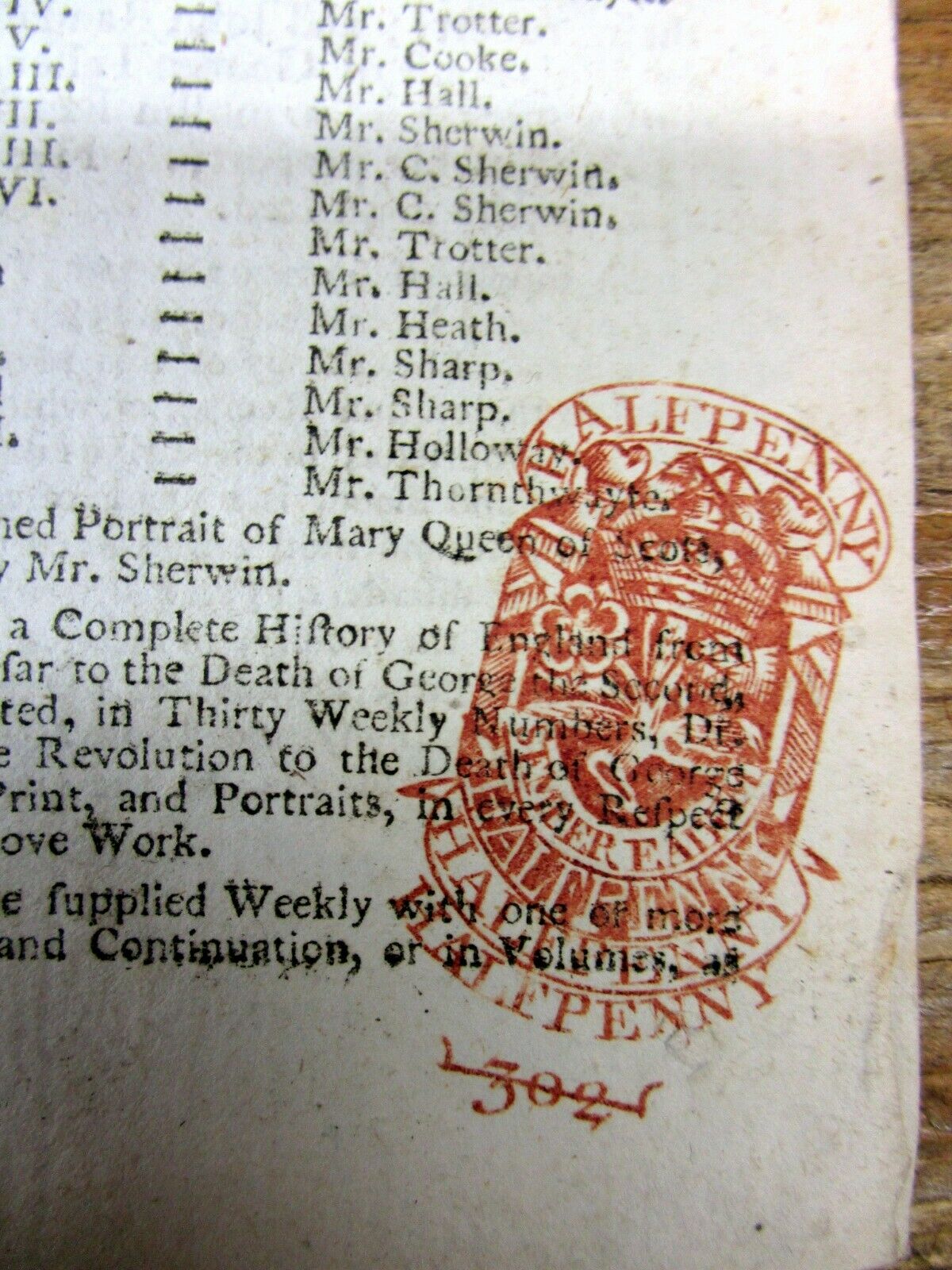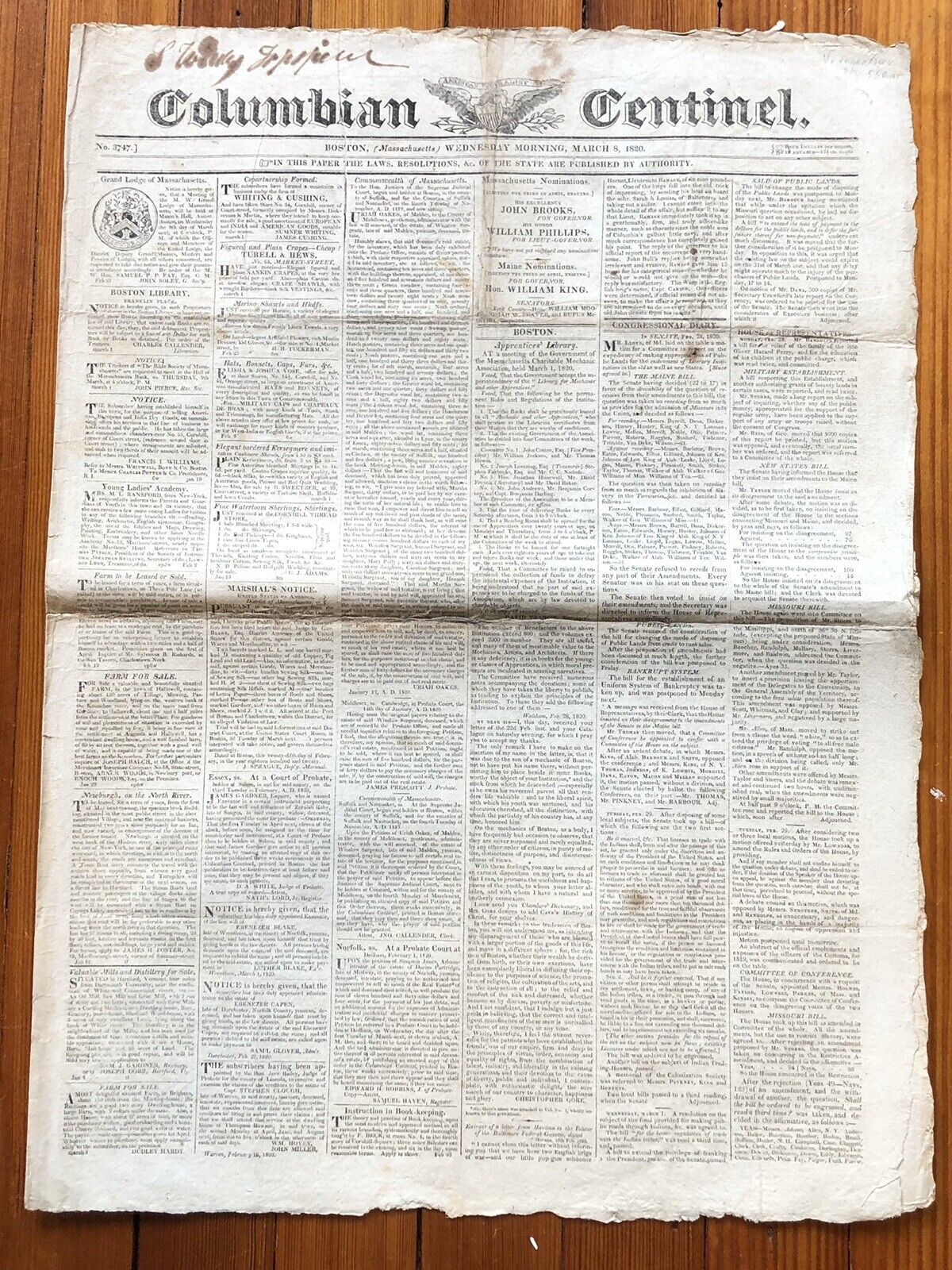-40%
Best 1861 CIVIL WAR newspaper HUGE POSTER MAP of MARYLAND after BALTIMORE RIOTS
$ 18.48
- Description
- Size Guide
Description
1861 CIVIL WAR newspaper with a HUGE front-page POSTER MAP of the Washington DC, Maryland, and Virginia as the seat of CIVIL WAR ACTION. Also on the front page headline report on the situation in Baltimore, Maryland in the aftermath of the violentBALTIMORE RIOTS
.
#1V-017
Please
visit our ebay store for printed on the front page other FANTASTIC Americana, Antiquarian Books and Ephemera.
SEE PHOTO-----COMPLETE, ORIGINAL NEWSPAPER, the
_New York Herald_
(NY) dated April 28, 1861, 1861, with incredibly displayable Baltimore, Maryland and CIVIL WAR history!
A spectacular addition to any fine CIVIL WAR collection. Perfect for framing and display!
The Baltimore riot of 1861 (also called the "Pratt Street Riots" and the "Pratt Street Massacre") was a civil conflict on Friday, April 19, 1861, on Pratt Street, in Baltimore, Maryland, between antiwar "Copperhead" Democrats (the largest party in Maryland) and other Southern / Confederate sympathizers on one side, and members of the primarily Massachusetts and some Pennsylvania state militia regiments en route to the national capital at Washington called up for federal service, on the other. The fighting began at the President Street Station, spreading throughout President Street and subsequently to Howard Street, where it ended at the Camden Street Station. The riot produced the first deaths by hostile action in the American Civil War and is nicknamed the "First Bloodshed of the Civil War"
In 1861, most Baltimoreans were anti-war, and did not support a violent conflict with their southern neighbors.[citation needed] Many sympathized passionately with the Southern cause. In the previous year's presidential election, Abraham Lincoln had received only 1,100 of more than 30,000 votes cast in the city. Lincoln's opponents were infuriated (and supporters disappointed) when the president-elect, fearing an infamous rumored assassination plot, traveled secretly through the city in the middle of the night on a different railroad protected by a few aides and detectives including the soon-to-be famous Alan Pinkerton in February en route to his inauguration (then constitutionally scheduled for March 4) in Washington, D.C. The city was also home to the country's largest population (25,000) of free African Americans, as well as many white abolitionists and supporters of the Union. As the war began, the city's divided loyalties created tension. Supporters of secession and slavery organized themselves into a force called "National Volunteers" while Unionists and abolitionists called themselves "Minute Men".
The American Civil War began on April 12, one week before the riot. At the time, the slave states of Virginia, North Carolina, Tennessee, and Arkansas had not yet seceded from the U.S. The status of Delaware, Maryland, Missouri, and Kentucky (later known as "border states"), remained unknown. When Fort Sumter fell on April 13, the Virginia legislature took up a measure on secession. The measure passed on April 17 after little debate. Virginia's secession was particularly significant due to the state's industrial capacity. Sympathetic Marylanders, who had supported secession ever since John C. Calhoun spoke of nullification, agitated to join Virginia in leaving the Union. Their discontent increased in the days afterward when Lincoln put out a call for volunteers to serve 90 days and end the insurrection.
New militia units from several Northern states were starting to transport themselves south, particularly to protect Washington, D.C., from the new Confederate threat in Virginia. Baltimore's newly elected reform mayor, George William Brown, and the new police marshal (chief), George Proctor Kane, anticipated trouble and began efforts to placate the city's population.
On Thursday, April 18, 460 newly mustered Pennsylvania state militia volunteers (generally from the Pottsville, Pennsylvania area) arrived from the state capital at Harrisburg on the Northern Central Railway at its Bolton Street Station (off present-day North Howard Street
– across the street from the present site of the Fifth Regiment Armory of the Maryland National Guard, built 1900). They were joined by several regiments of regular United States Army troops under John C. Pemberton (later the Confederate general and commander at the siege of Vicksburg, Mississippi, whose surrender in July 1863 resulted in the first split of the Confederacy) returning from duty on the western frontier. They split off from Howard Street in downtown Baltimore and marched east along the waterfront to Fort McHenry and reported for duty there. Seven hundred "National Volunteers" of southern sympathizers rallied at the Washington Monument and traveled to the station to confront the combined units of troops, which unbeknownst to them were unarmed and had their weapons unloaded.[5] Kane's newly organized city police force generally succeeded in ensuring the Pennsylvania militia troops' safe passage marching south on Howard Street to Camden Street Station of the Baltimore and Ohio Railroad. Nevertheless, stones and bricks were hurled (along with many insults) and Nicholas Biddle, a black servant traveling with the regiment, was hit on the head. But that night the Pennsylvania troops, later known as the "First Defenders", camped at the U.S. Capitol under the uncompleted dome, which was then under construction.
Very Good condition.
This listing includes the complete entire original newspaper.
VINTAGE BOOKS AND FINE AR
T stands behind all of the items that we sell with a no questions asked, money back guarantee. Every item we sell is original printed on the date indicated at the beginning of its description, unless clearly stated as a reproduction in the header AND text body. U.S. buyers pay calculated priority postage which includes waterproof plastic and a heavy cardboard flat to protect your purchase from damage in the mail. International postage is quoted when we are informed as to where the package is to be sent. We do combine postage (to reduce postage costs) for multiple purchases sent in the same package.
We accept payment by PAYPAL.
W
e ship packages daily.
This is truly a piece OF HISTORY that YOU CAN OWN!
